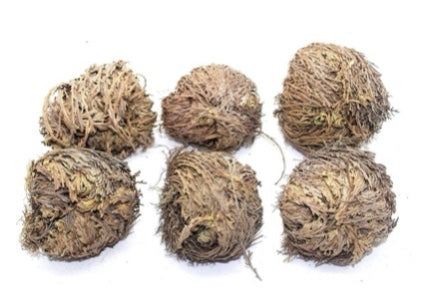KPONIKA APOTHECARY
Rose of Jericho
Rose of Jericho
Couldn't load pickup availability
The Rose of Jericho, scientifically known as Anastatica hierochuntica, is a plant that is often associated with symbolism and has been used in various cultural and spiritual practices. Here are some key points about the Rose of Jericho:
-
Resurrection Plant: The Rose of Jericho is sometimes referred to as the "Resurrection Plant" because of its unique ability to survive in a desiccated, seemingly dead state and then revive when exposed to water. This characteristic has made it a symbol of renewal and rebirth.
-
Symbolism: The plant has symbolic significance in various cultures and traditions. It is often used to represent resilience, renewal, and the cyclical nature of life. In some spiritual practices, it may be associated with rituals for attracting positive energy and blessings.
-
Magical and Spiritual Uses: The Rose of Jericho is used in certain magical and spiritual practices for its perceived mystical properties. It may be incorporated into rituals or ceremonies aimed at bringing about positive transformations, prosperity, or spiritual growth.
-
Water Rituals: One common practice involves placing the dried Rose of Jericho in a bowl of water. As the plant absorbs water, it unfolds and opens up, symbolizing the blooming of new possibilities. This water is sometimes believed to hold positive energies and is used for various spiritual purposes.
-
Protection: In some traditions, the Rose of Jericho is believed to have protective qualities. It may be used in rituals or charms to ward off negative energy or to create a protective barrier.
-
Cultural History: The Rose of Jericho has a history rooted in the Middle East and North Africa. It is mentioned in historical texts and has been associated with various legends and stories.
-
Decorative Uses: The dried form of the Rose of Jericho is often used for decorative purposes. When not in contact with water, it retains its curled and desiccated appearance, making it a unique and visually interesting item.
Share


